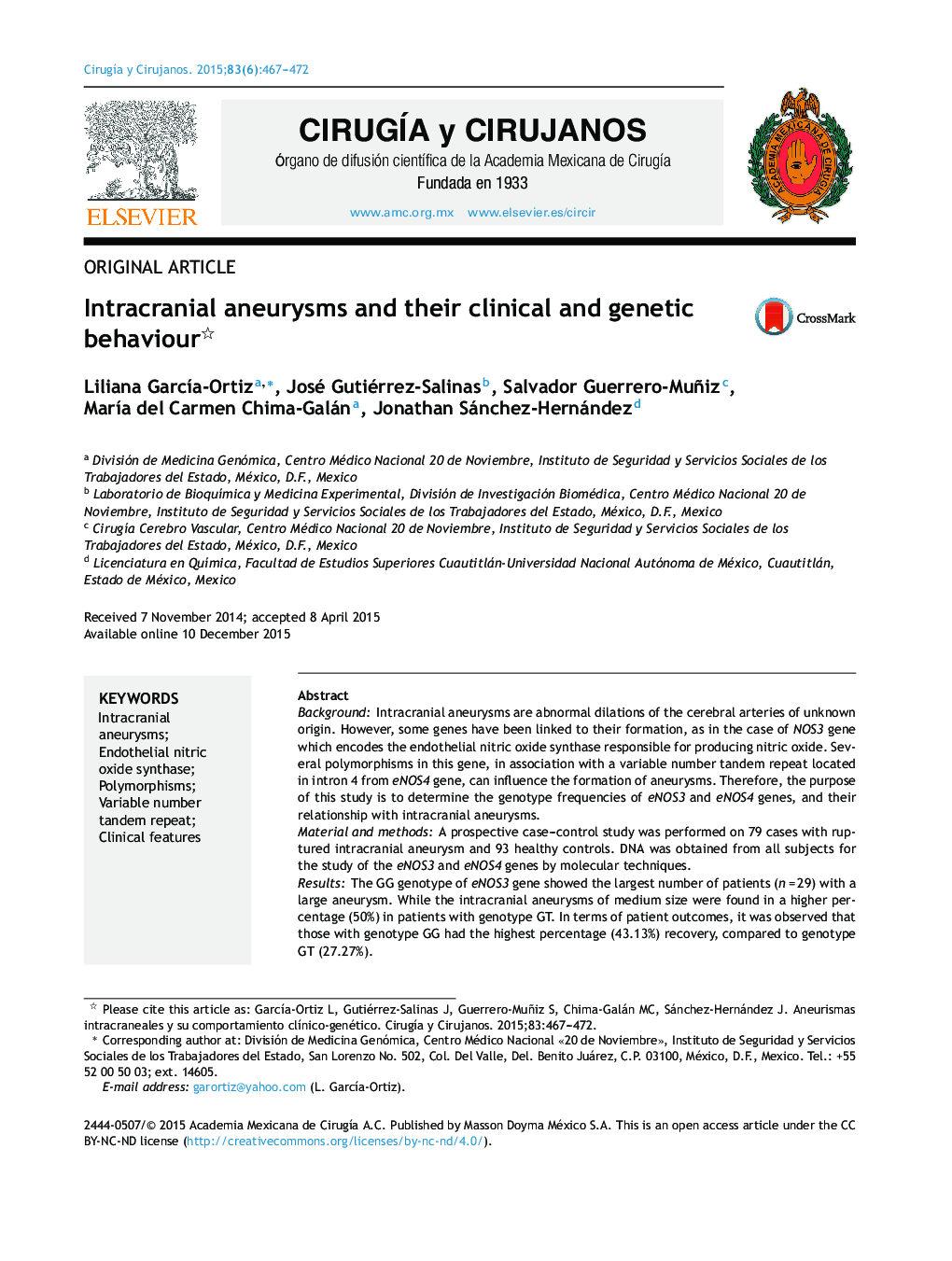| کد مقاله | کد نشریه | سال انتشار | مقاله انگلیسی | نسخه تمام متن |
|---|---|---|---|---|
| 4283400 | 1286885 | 2015 | 6 صفحه PDF | دانلود رایگان |
BackgroundIntracranial aneurysms are abnormal dilations of the cerebral arteries of unknown origin. However, some genes have been linked to their formation, as in the case of NOS3 gene which encodes the endothelial nitric oxide synthase responsible for producing nitric oxide. Several polymorphisms in this gene, in association with a variable number tandem repeat located in intron 4 from eNOS4 gene, can influence the formation of aneurysms. Therefore, the purpose of this study is to determine the genotype frequencies of eNOS3 and eNOS4 genes, and their relationship with intracranial aneurysms.Material and methodsA prospective case–control study was performed on 79 cases with ruptured intracranial aneurysm and 93 healthy controls. DNA was obtained from all subjects for the study of the eNOS3 and eNOS4 genes by molecular techniques.ResultsThe GG genotype of eNOS3 gene showed the largest number of patients (n = 29) with a large aneurysm. While the intracranial aneurysms of medium size were found in a higher percentage (50%) in patients with genotype GT. In terms of patient outcomes, it was observed that those with genotype GG had the highest percentage (43.13%) recovery, compared to genotype GT (27.27%).ConclusionsThe present study shows that there is a tendency of an association between genotypes of eNOS3 gene with the mean size of the aneurysm, as well as clinical sequelae of the disease in patients with intracranial aneurysms.
ResumenAntecedentesLos aneurismas intracraneales son dilataciones anormales de las arterias cerebrales. La etiología es desconocida, sin embargo algunos genes se han relacionado con su formación; como el caso del gen NOS3 que codifica a la sintetasa de óxido nítrico endotelial encargada de producir óxido nítrico. Varios polimorfismos en este gen en asociación con un número variable de repeticiones en tándem localizado en el intrón 4 del gen eNOS4 pueden incidir en la formación de aneurismas. Por eso, la finalidad de nuestro estudio es conocer las frecuencias genotípicas de los genes eNOS3 y eNOS4 y su relación con aneurismas intracraneales.Material y métodosSe realizó un estudio prospectivo de casos y controles. Se estudiaron 79 casos con aneurisma intracraneal roto y 93 controles sanos; de todos se obtuvo DNA para el estudio de los genes eNOS3 y eNOS4.ResultadosEl genotipo GG del gen eNOS3 mostró el mayor número de pacientes (n = 29) con aneurisma intracraneal grande. Mientras que los de tamaño mediano se encontraron en mayor porcentaje (50%) en pacientes con genotipo GT. En cuanto a la evolución de los pacientes, se observó que aquellos con genotipo GG presentaron el mayor porcentaje (43.13%) de recuperación, en comparación con los de genotipo GT (27.27%).ConclusionesNuestro estudio demuestra que en los casos con aneurismas intracraneales existe una tendencia de asociación entre los genotipos del gen eNOS3 con el promedio del tamaño del aneurisma, así como con las secuelas clínicas de la enfermedad.
Journal: Cirugía y Cirujanos (English Edition) - Volume 83, Issue 6, November–December 2015, Pages 467–472
